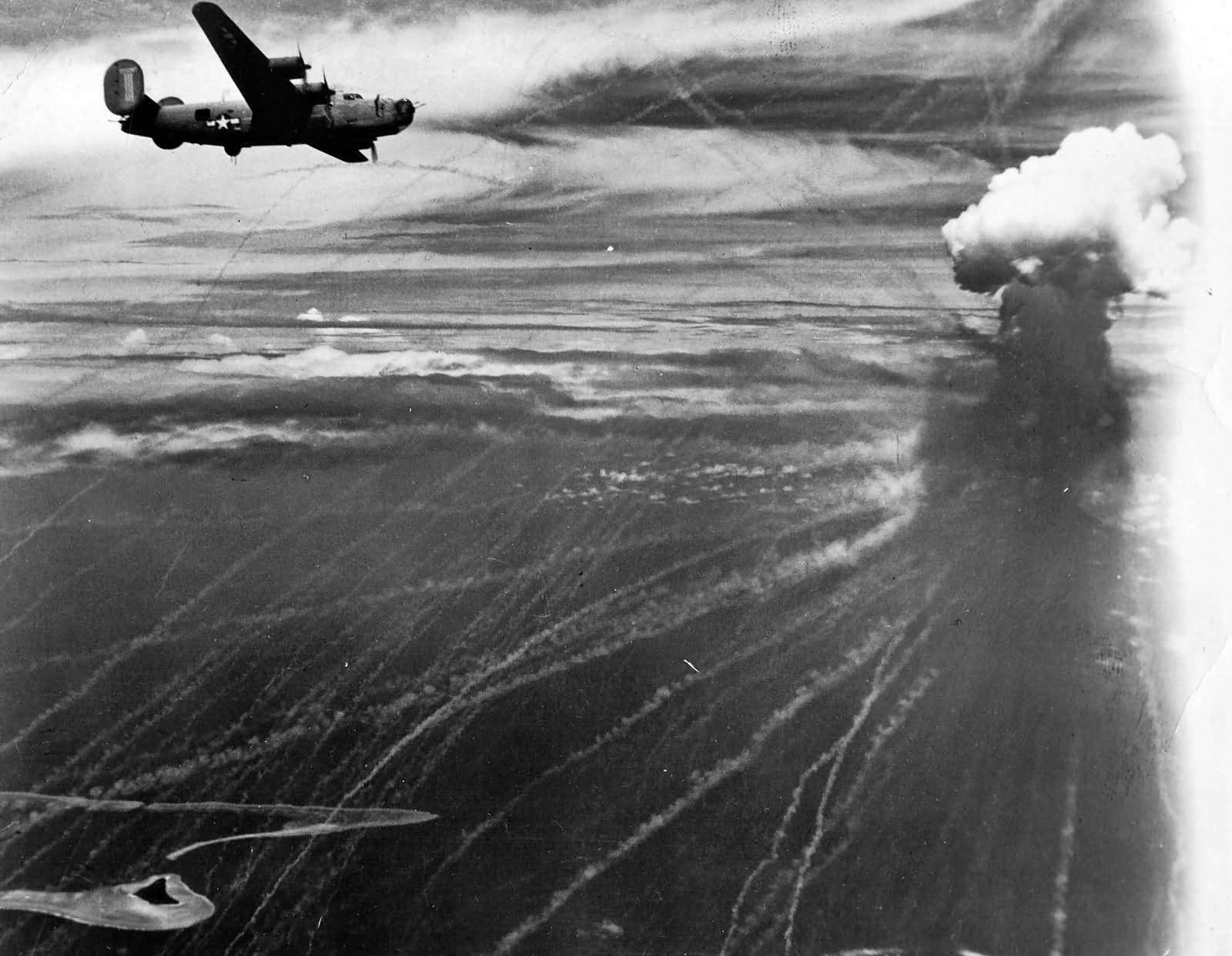The aerial siege of Truk, beginning in March 1944 and continuing until June 1945, was a pivotal campaign that sought to neutralize Truk’s strategic importance in the Pacific theater. While the Japanese initially fortified Truk as a key naval and air base, it became increasingly isolated and vulnerable to constant air raids by the US Army Air Force (USAAF). The island was subjected to relentless bombing from the Seventh, Eleventh, Thirteenth, and Twentieth Air Forces, with missions aimed at destroying airfields, naval facilities, and infrastructure.
The first raid, on March 15, 1944, involved B-24 Liberators bombing key targets like the Eten and Dublon airfields. This successful attack was the prelude to more intense operations, although logistical challenges forced subsequent delays. Raids on March 28 and 29 saw increased Japanese air resistance, but the US bombers continued to inflict significant damage on Truk’s infrastructure, despite sometimes heavy anti-aircraft fire and fighter opposition.
The pattern of night and daylight bombing missions continued throughout April 1944, with larger formations of bombers hitting various targets such as airfields, seaplane bases, and the town of Dublon. The Japanese air defenses were gradually worn down, with most of Truk’s aircraft either destroyed or relocated by May. As a result, Truk’s strategic value as a military base was effectively neutralized, and it became little more than a symbol of Japan’s diminished presence in the region.
By June 1944, the frequency of raids intensified again to prevent Truk from becoming a threat to the upcoming invasion of the Marianas. However, with only a handful of aircraft left operational and most facilities destroyed or abandoned, the Japanese presence on Truk had become almost irrelevant militarily. By mid-1945, it was used primarily as a training ground for new USAAF bomber units, including the B-29 Superfortresses. These units conducted practice bombing runs in preparation for missions over Japan, with Truk serving as a relatively safe target compared to more heavily defended Japanese cities.
Despite the constant bombardment, the Japanese garrison on Truk remained substantial, with over 34,000 men, including naval and army forces. However, with no prospect of reinforcement and little capacity to strike back at the US, Truk’s fortifications were largely symbolic by the time the war ended. The continued raids were not intended to prepare for an invasion but rather to ensure that Truk posed no threat to US operations in the Pacific. In the end, Truk’s isolation and the devastation of its facilities rendered it impotent as a military base.
